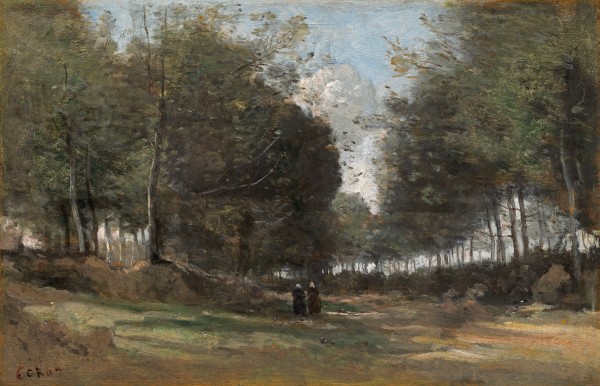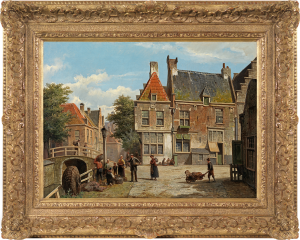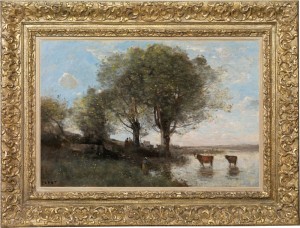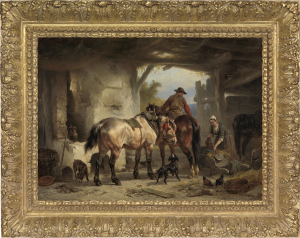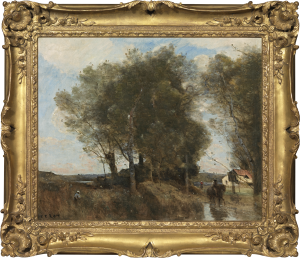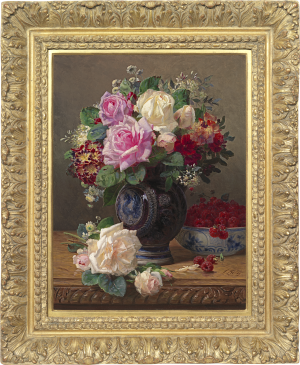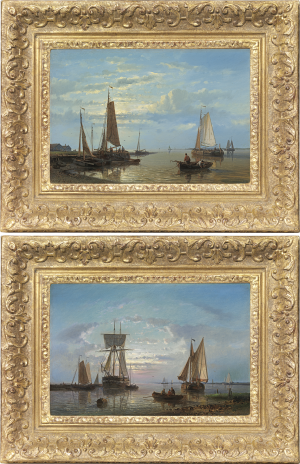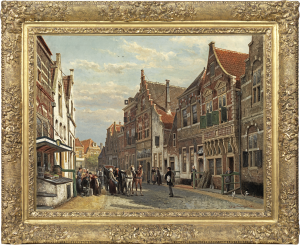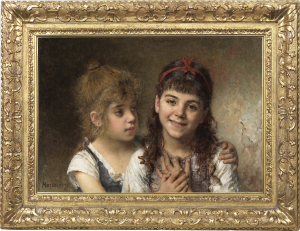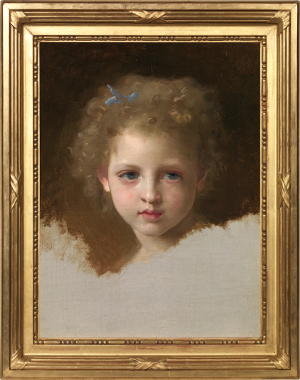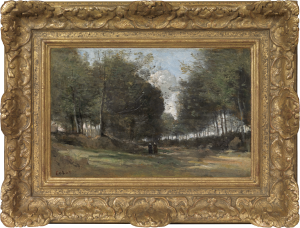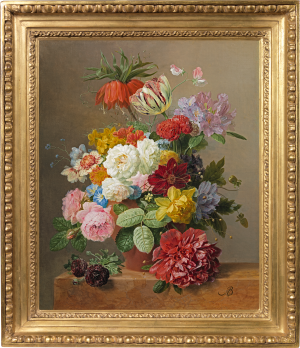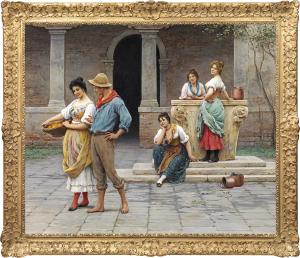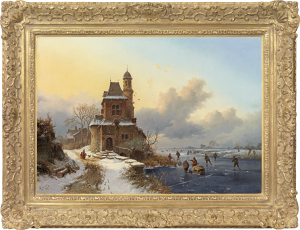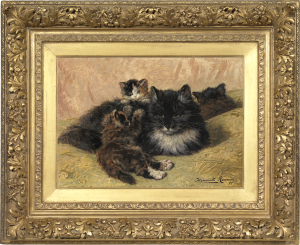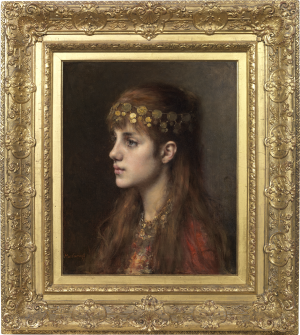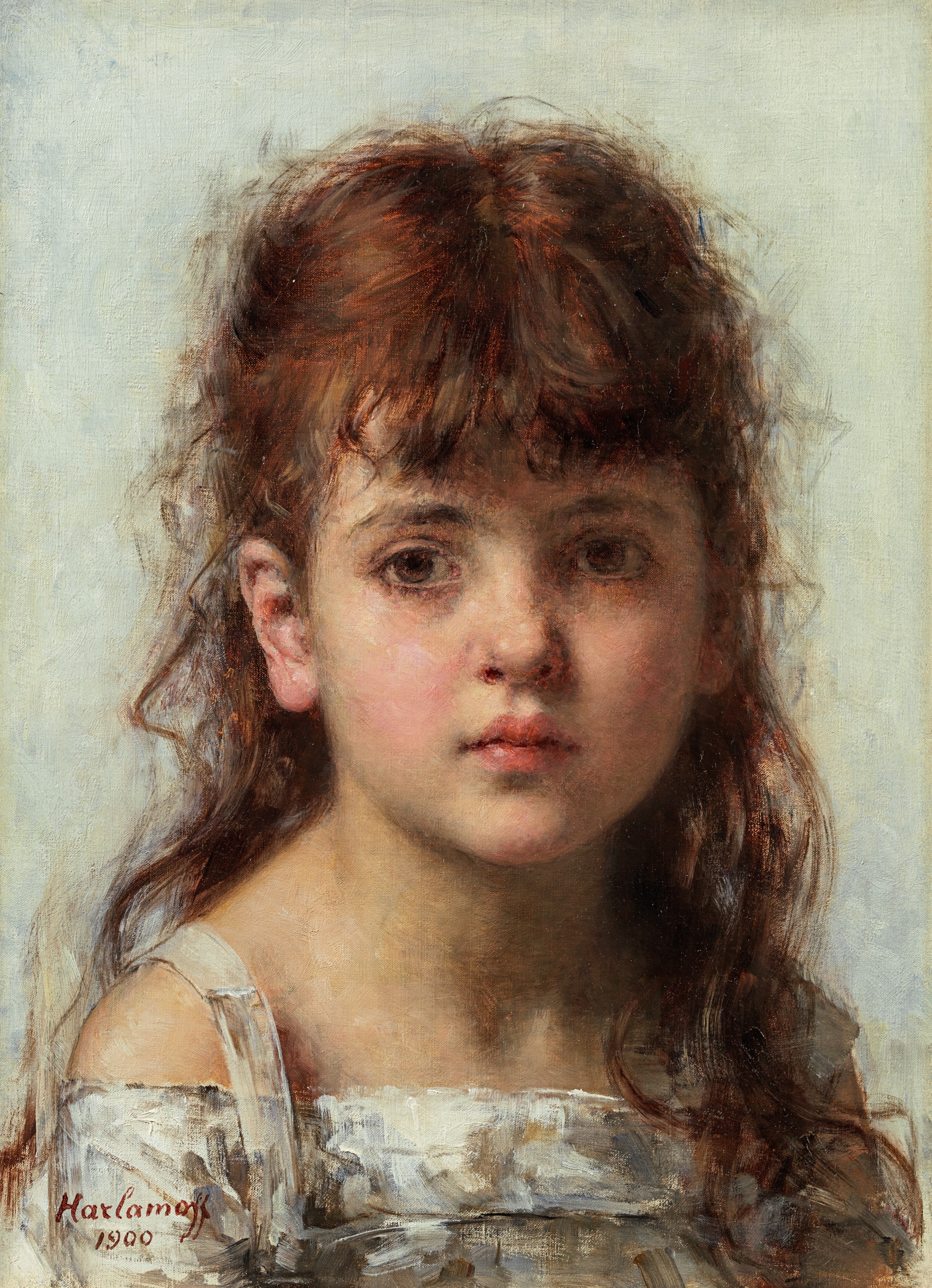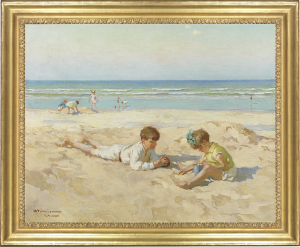Jean-Baptiste-Camille Corot
Saules près d'un ruisseau. Limousin
Oil on canvas: 9.6 x 15.2 (in) / 24.4 x 38.7 (cm)
Signed lower left: COROT
This artwork is for sale.
Please contact us on: +44 (0)20 7493 3939.
Email us
JEAN-BAPTISTE-CAMILLE COROT
Paris 1796 - 1875 Ville d’Avray
Ref: CA 120
Saules près d’un ruisseau, Limousin
Signed lower left: COROT
Oil on canvas: 9 5/8 x 15 ¼ in / 24.4 x 38.7 cm
Frame size: 14 ¼ x 20 in / 36.2 x 50.8 cm
Painted circa 1850-60
Provenance:
Vente de 38 Tableaux de Corot, Paris, 14th April 1858, lot 34;
where acquired by Gustave Claudon, Paris;
his widow, Mme Claudon;
from whom acquired in 1896 by Boussod, Valadon et Cie., Paris
Newhouse Galleries Inc., New York;
where acquired by a private collector, USA
Exhibited:
Paris, Palais Galliera, Exposition Organisée au Profit du Monument du Centenaire de Corot, May-June 1895, no.38 (as Saules près d’un ruisseau)
Literature:
André Schoeller and Jean Dieterle, Premier Supplément à l’Oeuvre de Corot par A Robaut et Moreau-Nélaton, Paris 1905, Paris 1948, pp.46-47, no.40, illus.
‘Beauty in art consists of a truthfulness in the impression we have received from an aspect of nature...the real is one part of art; the sentiment completes it’, Corot declared in 1856. With his emphasis on ‘impressions’, Corot anticipated the younger, Impressionist generation of artists who were to find wisdom and inspiration in his work. With his interest in memory as well as direct observation in forming his compositions, he also anticipated the concerns of the Post-Impressionists.
From 1846 Corot often spent summers in the Limousin, a lush region of southwest-central France with picturesque stone villages, quiet streams and an ancient, pastoral way of life. In Saules près d’un ruisseau, Limousin, an air of harmony prevails. Corot employs a tonally-linked palette of soft greens, greys, gentle blues and white to establish a poetic mood. He is emulating the atmospheric, ‘tonal’ landscapes of the great seventeenth century Dutch painters whom he admired, such as Salomon van Ruysdael (1600/03-1670). However, the artist’s awareness of the different shapes and colours of the trees is based on naturalistic observation and plein-air painting. He depicts the gnarled, stringy trunks and silver-green leaves of the willows, a typical tree of riverbanks. The trees form a frieze of delicious coolness along the river on this still, warm day. A peasant woman gazing at a distant farm, perhaps on her way home, is the only human presence.
JEAN-BAPTISTE-CAMILLE COROT
Paris 1796 - 1875 Ville d’Avray
Born into a prosperous Parisian merchant’s family, Jean-Baptiste-Camille Corot renounced his commercial heritage in order to pursue his vocation as a painter. Despite his family’s opposition, he received an allowance from his father that enabled him to study first with Michallon, and then with Bertin, both neo-classical landscape painters.
In 1825 Corot made his first visit to Italy. During the three years he spent there he painted many of his most spontaneous plein air masterpieces, remarkable for their fidelity to nature, a classical concern with form and the precise observation of tonal values. In 1834 and 1843, he made two more visits to Italy, painting in Rome, Florence and Venice.
Corot also painted more academic and finished works which he considered more suitable for the Paris Salon, where he exhibited from 1827. He received a second-class medal at the Salon in 1833 and was awarded the Légion d’Honneur in 1846. During the 1830s, Corot was influenced by Dutch seventeenth century artists, especially Jacob van Ruisdael. Apart from this Dutch phase, however, his paintings tended to convey a more idealised concept of nature, expressed in a Claudian vein, which often included literary, allegorical or mythological subjects.
Corot travelled extensively throughout France, painting along the Channel coast and in Fontainebleau. His most cherished spot was at Ville d’Avray near Versailles, where his parents had purchased a villa amidst a landscape that was of particular aesthetic appeal. He visited Holland in 1854 and England in 1862.
Corot’s increasingly idealised concept of landscape resulted in the all-pervasive lyricism that characterised his late work. He entitled these paintings souvenirs, which were essentially nostalgic distillations of his visual experience, admired for their delicate, dreamlike quality. In 1856 Corot wrote: ‘Beauty in art consists of a truthfulness in the impression we have received from an aspect of nature... the real is one part of art; the sentiment completes it’. It was the diaphanous, twilight effects of his paintings that epitomized such sentiment and greatly appealed to the prevalent neo-Rococo taste.
From the late 1840s, Corot became acquainted with the Barbizon painters, particularly Daubigny, Millet and Rousseau, with whom he painted and studied the new art of photography. His interest in naturalism and an unerring fidelity to his own personal vision earned him the esteem of many younger artists, including Harpignies, Lépine and Pissarro; it was they who named him with reverence Père Corot.

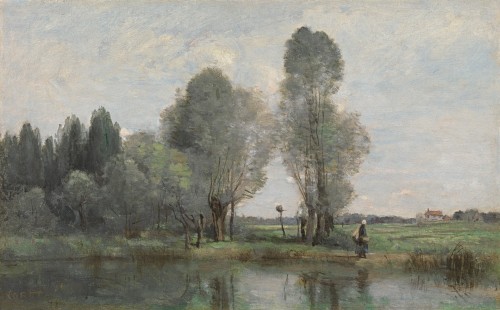

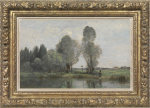
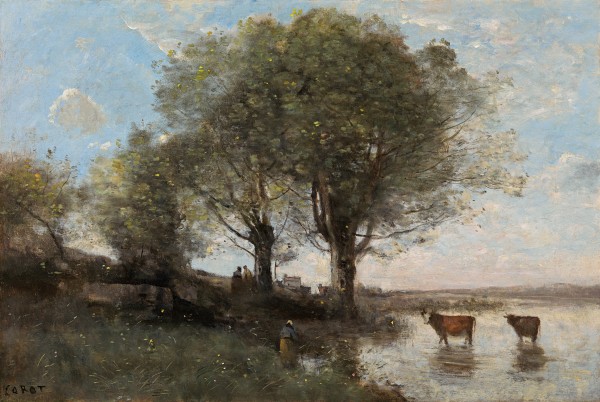
![Jean-Baptiste-Camille Corot - Passiance [Landes] Jean-Baptiste-Camille Corot - Passiance [Landes]](/images_products/M_478_bc1b82858b896871d7fde32923b8bdf8.jpg)
